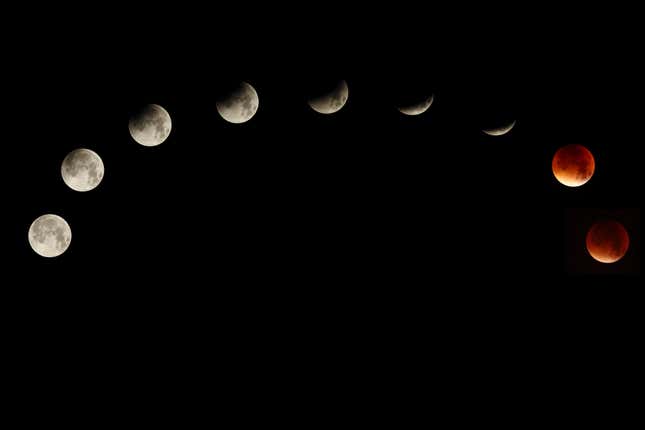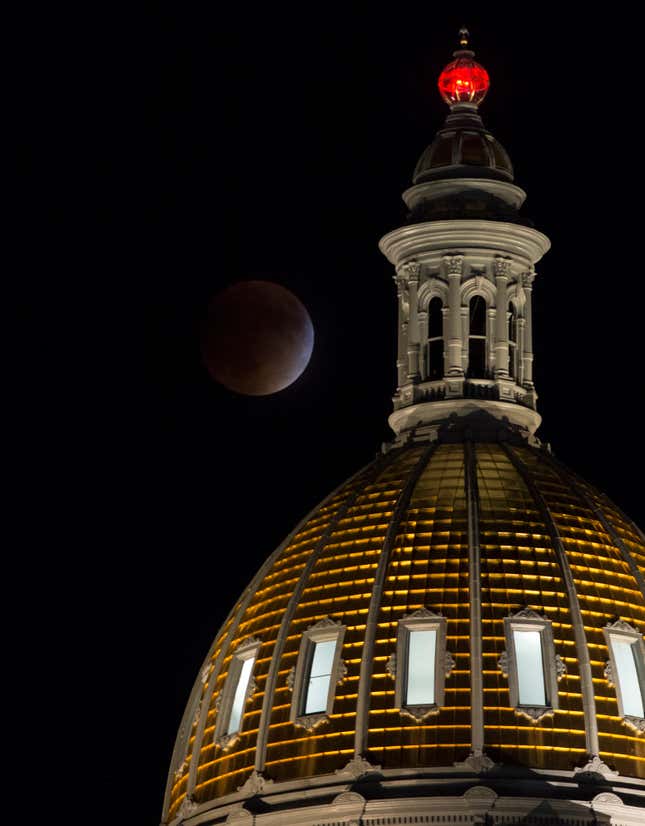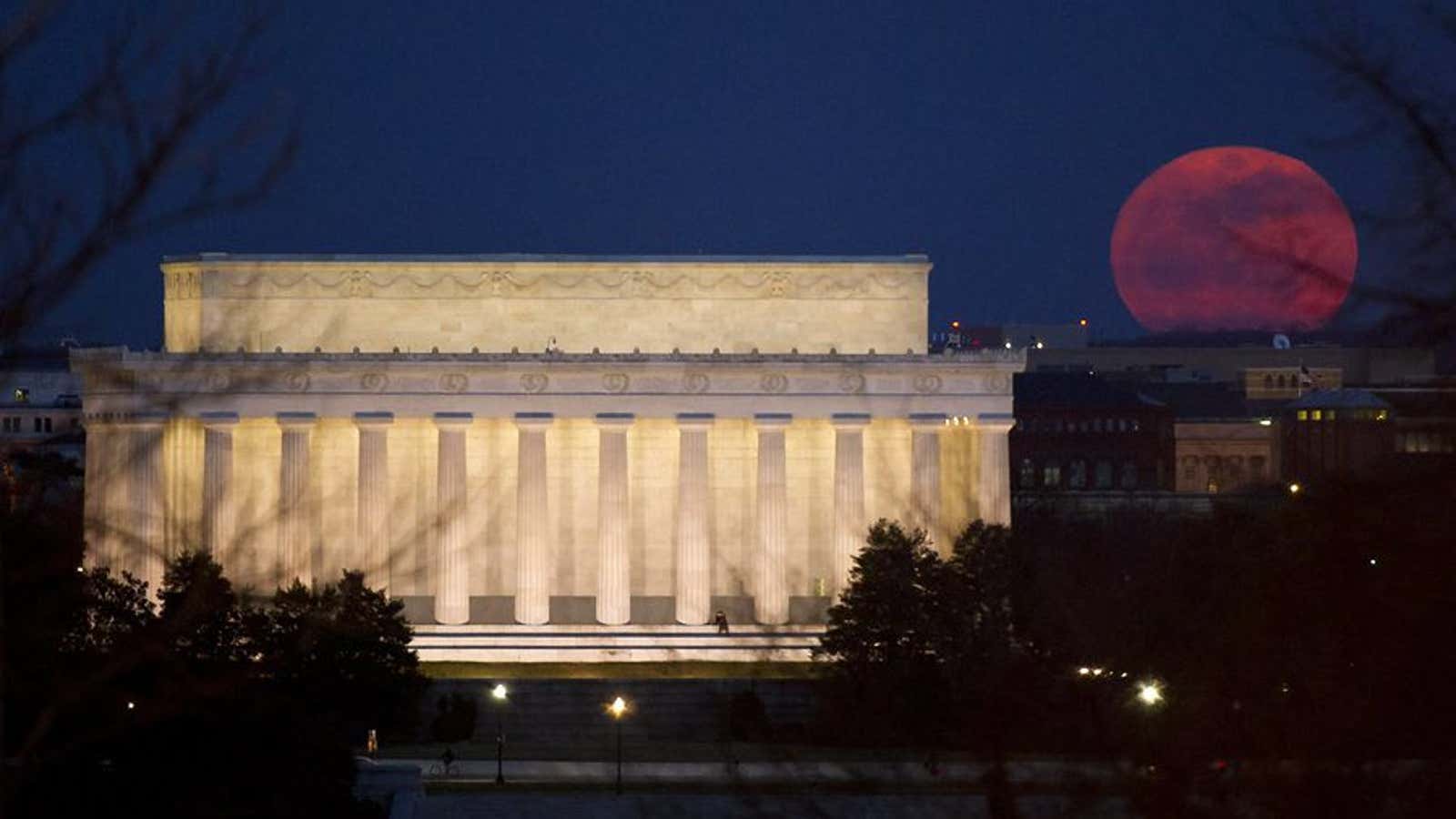Visible supermoons—full moons that appear when the moon is at its closest orbital point to Earth—aren’t very rare. Having three in a row certainly is.
And that’s exactly what astronomy fans are being treated to this winter.
The first supermoon appeared when the moon swung by Earth 26,500 km (approximately 16,500 miles) closer than usual on Dec. 3. It will reappear as a visible supermoon on New Year’s Day 2018 and again on Jan. 31.
Visible supermoons appear 14% bigger and 30% brighter than full moons that occur at the farthest point in the moon’s orbit. If you only have time to catch one episode of the trilogy, NASA recommends catching the last one, which will be extra special.
Not only is the second full moon of a month considered a blue moon, the Jan. 31 supermoon will also feature a total lunar eclipse, with totality visible from eastern Asia across the Pacific to western North America. During the eclipse, the moon will slowly lose its brightness and take on a reddish hue because of the way the atmosphere bends the light, says NASA. As a result, totally eclipsed moons are sometimes also called “blood moons.”
When can I see the supermoons and the lunar eclipse?
The best time to enjoy either supermoon is right after moonrise and before sunrise, when the moon is sitting on the horizon. It will appear its biggest and brightest because of a “moon illusion” effect that’s created when you are able to compare the lunar body to other objects for scale, like buildings and foliage. Check your local moonrise time here.
Don’t worry if you miss the moonrise—you can continue to enjoy a larger-than-average moon for a few more days. It just won’t be a full moon.
On the night of Jan. 31, the lunar eclipse will begin at 11:48am UTC and reach its maximum at 1:30pm UTC. That means viewers who live in eastern North America will need to wake up early to catch the partial eclipse. Here’s a map of where you can see the eclipse.

Can I see the supermoon and lunar eclipse without going outside?
If it’s too cloudy, or too cold to go outside, there are options to beam either celestial event straight to your living room. The Virtual Telescope project provides a livestream of the Jan. 1 supermoon rise over Rome’s skyline, beginning at 4:00pm UTC, and the Jan. 31 eclipse from Australia, beginning at 11:30am UTC.
What’s the best way to photograph the supermoon or lunar eclipse?
To take a picture of the supermoon or the lunar eclipse with a smartphone, tap on the moon on the screen and hold your finger in place to lock the camera’s focus. Then adjust the exposure slider that appears next to your finger to get the right balance of light for your shot.
If you’re using a DSLR, NASA’s senior photographer Bill Ingalls recommends that you use the daylight white balance to adjust for the sunlight being reflected off the moon. He says that it’s important to keep in mind that the moon is a moving object. “It’s a balancing act between trying to get the right exposure and realizing that the shutter speed typically needs to be a lot faster.”

To get an original shot, Ingalls suggests taking a picture that puts the moon in context of a local landmark, something that gives your photo a sense of place. “Don’t make the mistake of photographing the moon by itself with no reference to anything,” say Ingalls. “Everyone will get that shot.”
Do I need special glasses to watch the supermoon or the lunar eclipse?
Fortunately, unlike the solar eclipse, the supermoon and the lunar eclipse are safe to view with the naked eye! There’s nothing to worry about if you find yourself enthralled and staring up into the sky for a very long time.
